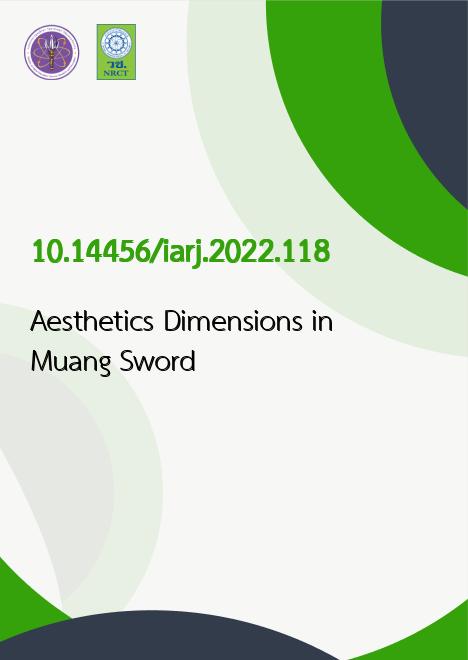
|
Aesthetics Dimensions in Muang Sword |
|---|---|
| รหัสดีโอไอ | |
| Creator | Phra Supawat Sukhawattano (Ketkatuk) |
| Title | Aesthetics Dimensions in Muang Sword |
| Contributor | Phramaha Chatchawan Thitaguno (Jankhoon), Chakkree Sricharumedhiyan |
| Publisher | DR.KEN Institute of Academic Development and Promotion |
| Publication Year | 2565 |
| Journal Title | Interdisciplinary Academic and Research Journal |
| Journal Vol. | 2 |
| Journal No. | 5 |
| Page no. | 661-674 |
| Keyword | Aesthetic Dimensions, Muang Sword, Local People |
| URL Website | https://so03.tci-thaijo.org/index.php/IARJ/about |
| Website title | https://so03.tci-thaijo.org/index.php/IARJ/article/view/263750 |
| ISSN | 2774-0374 |
| Abstract | Aesthetics is a study of philosophy that deals with the principles of beauty that are created by humans and nature. It happens in our minds when we engage with objects by viewing visual art. In this case, aesthetics is a branch of philosophy to study and analyzes what aesthetic values are and how to employ the theory through judgments of taste. Thus, this is the reason to analyze the aesthetic dimensions of the Muang Sword regarding the beauty, satisfaction, and affection of the Muang sword’s identity. By using the three values of beauty theory to analyze it; subjectivism theory, objectivism theory, and relativism theory. Muang sword can be found in the Northern provinces of Thailand; Chiang Mai, Chiang Rai, Mae Hong Son, Lamphun, Lampang, Phrae, Nan, and Phayao. In the past, those used to be part of the Lanna Kingdom then they were become a part of Siam by King Rama V in the Rattanakosin eras. When the government has been changed, those provinces in the North became part of Thailand and Muang sword also came to be a heritage and identity of the Northern provinces, of Thailand. Its beauty can be divided into two dimensions; concrete and abstract. Regarding concrete, its beauty in the element of the sword is complete and can be touched. For the abstract, its beauty and belief in the soul could not touch and judge the aesthetic in Muang's sword by using the relativism theory regarding the beauty of objects and feelings. |